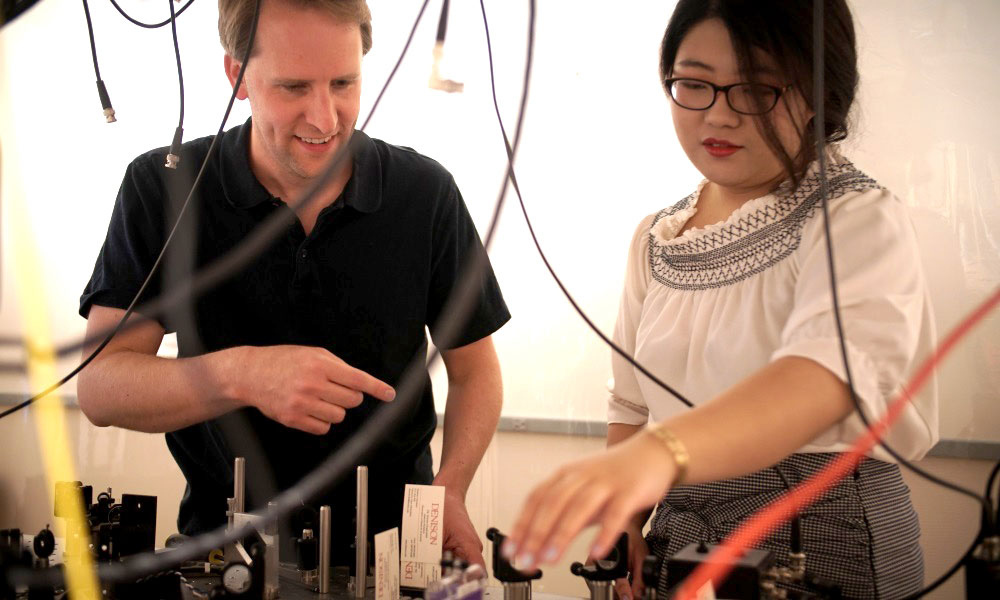Associate Professor of Physics Steven Olmschenk has been awarded a National Science Foundation (NSF) CAREER grant to pursue an interface between trapped atomic ions and infrared light. The grant will total $400,000, distributed over five years, and includes funding for equipment, student researchers, and curricular development. The NSF CAREER award is one of the most prestigious awards given to early-career faculty.
The research being pursued in Olmschenk’s Olin Science Hall laboratory is motivated by the emerging technology of quantum communication, which seeks to use the features of quantum physics to guarantee the security of communication networks. In particular, the project aims to demonstrate an interface between infrared photons and trapped ions to overcome some of the challenges facing quantum communication networks.
Infrared light suffers minimal losses in optical fiber and trapped ions can reliably store quantum information — by combining the two, this approach has the potential to extend the size and efficiency of quantum communication networks.
Students working on this project will benefit from atomic physics research training using lasers, optics, photonics, and fiber technology. The project also will develop new curricula incorporating photonics technologies. Altogether, these activities will help prepare the next generation of STEM researchers, educators, and innovators.
Olmschenk arrived at Denison in 2012, following postdoctoral research in the Laser Cooling group at the National Institute of Standards and Technology (NIST) in Maryland. He has bachelor’s degrees in physics and mathematics from the University of Chicago, and a doctorate in physics from the University of Michigan. At Denison, he teaches at all levels in the physics curriculum and has a strong commitment to mentoring undergraduate researchers.
